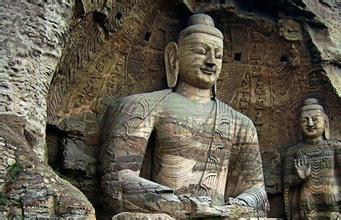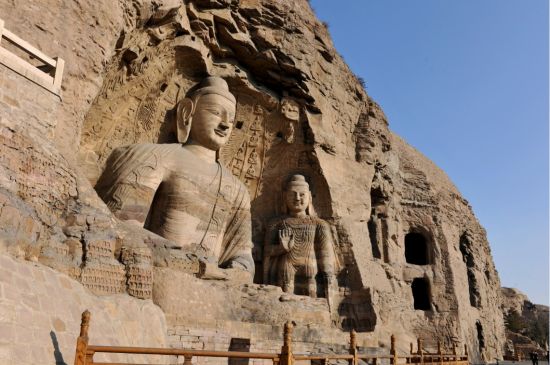Yungang Grottoes in Datong City
Natural Features
Yungang Grottoes was carved on the north cliff of Wuzhou Mountain 16km west cf Da}ong City.Shanxi Province. The caves were carved in the mid-5th century,North Wei Dynasty,stretching about 1 km from east to west as one of the largest clusters of grottoes in China. With an enormous size and rich contents,Yungang Grottoes ranks side by side with Mogao Grottoes in Dunhuang of Gansu Province and Longmen Grottoes in Luoyang of Henan Province as the three great cluters of cave temples in China.

On the three,Yungang Grottoes stands out for its rich contents and refined carving. Preserved to the present in the Grottoes are 53 caves and over 51 000 statues. Yungang grottoes consists of three sections,the east,the west,and the central,with caves of all sizes pleasantly scattered half way on Yungang Mountain.Caves in the east section feature in pagodas,thus called pagoda caves. Those of the central section were all structured with a front and a rear chamber,with the Buddha in the center and relief carving all over the walls. Caves of the west section are mostly medium or small sized,or small niches added in later times,actually,in most cases,carved after the capital of North Wei Dynasty was moved from Datong to Luoyang.

On the interior and exterior walls as well as the Buddha's halos and the caisson ceilings of the caves,there are vividly carved groups of apsaras to manifest the world of ultimate happiness pursued by Buddhists. All the statues are modeled with marvelous personification that gives the Buddha a human nature and expression as well as infinite vigor as the ancient treasure of Chinese culture












